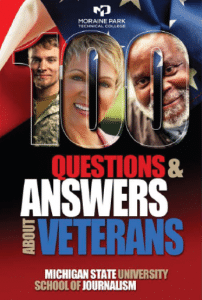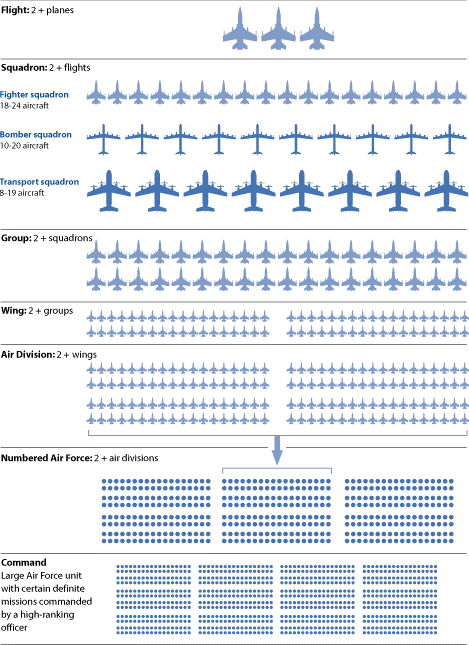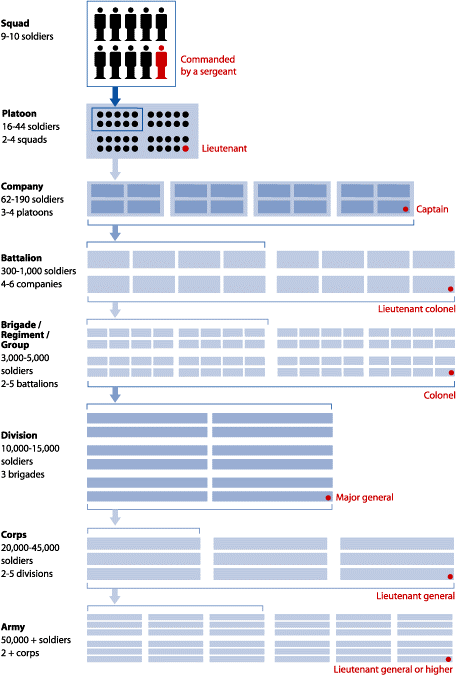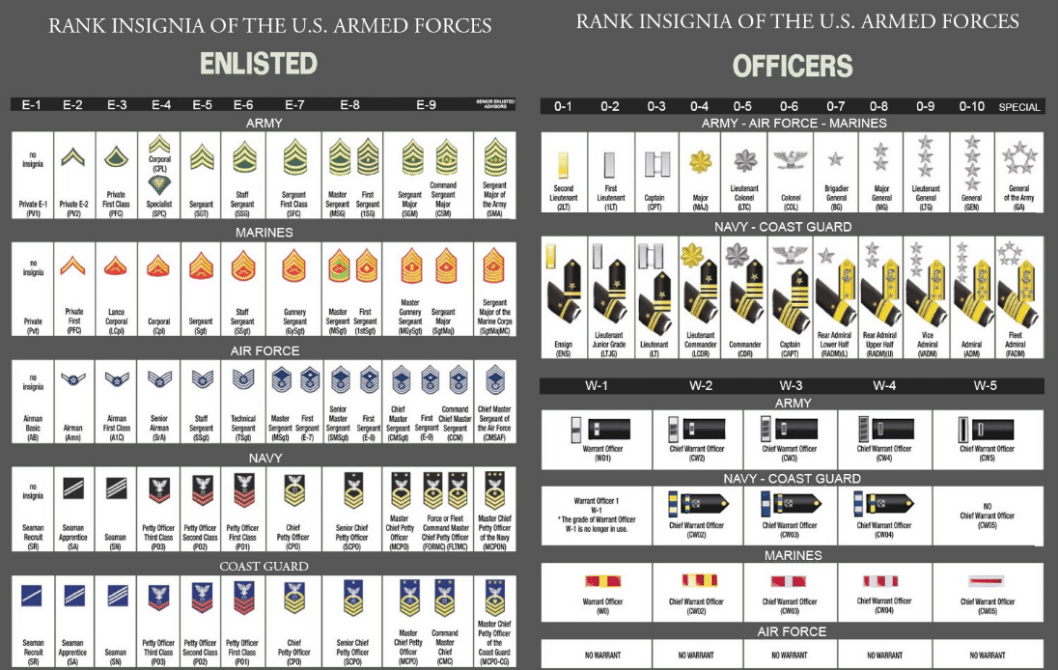Understanding Veterans – Part Two
In part one we talked about the demographics and the composition of the veteran community, in part two we discuss the military structure.

Each branch of service is made up of many smaller units illustrated by these two graphics:

The military has a distinct chain of command starting with the President of the United States for the active duty components, and the Governors of each state when it comes to our National Guard units. From there it works its way down to three major types of service members (see the illustration),
each with distinctly different levels of authority, knowledge and time in service. Commissioned officers command all members of their unit to include other officers that are junior to them. Officers though may rely heavily on the Non-Commissioned Officer (NCO), our next group, for their expertise and guidance. NCO’s, don’t normally command officers unless it’s in a training environment and will be in charge of those enlisted members junior to them.
Lastly, Warrant officers, are individuals with an advanced level of technical and tactical knowledge. Predominantly in roles as technical leaders, trainers, operators and managers.
As mentioned in our last entry, one way to identify a veteran might be by the use of military jargon. The military uses plenty of acronyms and slang terms as part of the military culture and service member have many ways to describe a person or an object, creating a language all its own, which could be a book in itself. To make matters worse each branch has their own slang terms and it could vary from era to era. Terms like “head” (urinal), “joe” (coffee or soldier) and “POG” (person other than grunt), are all terms understood by a particular branch or by those in a specific “MOS” (Military Occupational Specialty).
Finally, within the branches of service has always existed a rivalry which has created competition and bragging rights over the years. Rivalries are an important part of our military culture, they can motivate us to excel, provide comradery and even help carry on traditions, but no matter how much it seems the different branches disagree, when it comes down to it we are a team, we work together and makes us the strongest volunteer force in the world.
Stayed tuned for part three, when we discuss deployments, discharges and military benefits.
For more information on Moraine Park’s veteran services and offerings, visit morainepark.edu/veterans.




